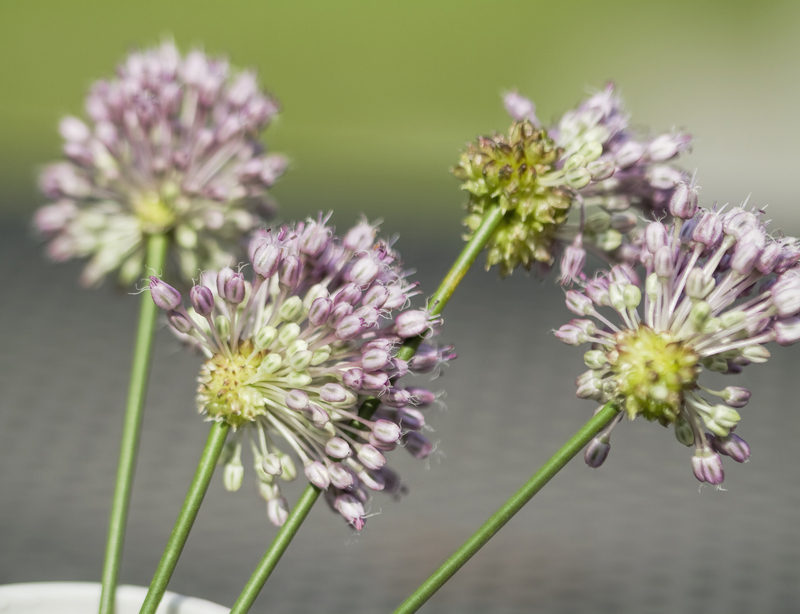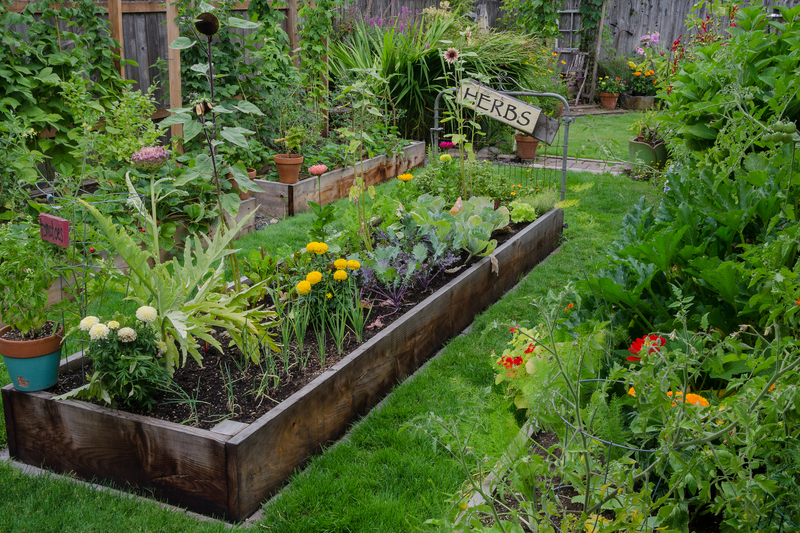Sow The Seeds of Change: Gardening's Role In Climate Rescue
Posted on 18/08/2025
Sow The Seeds of Change: Gardening's Role In Climate Rescue
As the world faces unprecedented environmental challenges, from rising global temperatures to shrinking biodiversity, the importance of individual action cannot be understated. While complex policies and sweeping reforms are essential, small everyday acts--like tending a garden--can cultivate mighty change. Gardening for climate rescue is more than just a trend; it is a transformative movement that reconnects humanity to the earth and fosters sustainability for future generations.
Understanding Climate Rescue
Before digging into the earth, it's crucial to understand what climate rescue entails. Climate rescue refers to the proactive steps humans can take to mitigate or reverse the adverse effects of climate change. This urgent mission touches every aspect of our lives, from the food we eat to the landscapes we inhabit. Common strategies include reducing greenhouse gas emissions, protecting existing green spaces, and restoring damaged ecosystems. But did you know that your backyard, balcony, or community plot can contribute to global climate action?

How Gardening Fights Climate Change
Gardening's role in climate rescue is multifaceted, leveraging natural processes to address ecological crises. Here's how:
- Carbon Sequestration: Plants absorb carbon dioxide (CO2) through photosynthesis, capturing this potent greenhouse gas and locking it in their tissues and the soil.
- Promoting Biodiversity: Diverse gardens support wildlife, including bees, birds, and beneficial insects, all of which are critical for resilient ecosystems.
- Regenerating Soil Health: Healthy soils store more carbon and nurture healthier crops, helping break cycles of erosion and degradation.
- Reducing Heat Islands: Urban areas heat up faster than rural ones due to concrete and asphalt. Gardens cool the air, making cities more livable.
- Minimizing Waste: Home gardeners often compost, recycle kitchen scraps, and reduce landfill contributions.
- Decreasing Food Miles: Growing your food slashes the emissions from transporting produce long distances.
Unlocking the Power of Plants
The humble act of planting a seed has deep global implications. Various plant species are particularly effective at capturing and storing planet-warming carbon. Trees like maples and oaks, perennial shrubs, and even certain grasses play a outsized role in atmospheric CO2 drawdown. Establishing a mix of trees, shrubs, and ground covers can turn any garden into a mini carbon sink, soaking up and stabilizing greenhouse gases where they would otherwise linger in the atmosphere.
Gardening for the Planet: Practices That Rescue the Climate
1. Embrace Organic Gardening
Conventional gardening often relies on chemical fertilizers, pesticides, and herbicides, all of which rely on fossil fuels for production and disrupt delicate ecosystems. Organic gardening shuns these in favor of natural systems--composting, mulching, and using companion plants to control pests. These methods not only produce healthier plants and pollinators but also reduce your garden's carbon footprint.
2. Prioritize Native Plants
Native plant gardening restores the natural balance of local ecosystems. Native species are adapted to their regions, require less water and maintenance, and support native wildlife far more effectively than exotic plants. By choosing indigenous flowers, trees, and shrubs, gardeners revive habitats, attract pollinators, and stabilize soils, all contributing to climate carbon rescue.
3. Build Healthy Soils
Soil health is at the heart of climate-resilient gardening. Healthy soils are teeming with microbial life and rich in organic matter, both of which are essential for storing carbon. Techniques for fostering healthy soils include:
- Composting: Turn food waste into nutrient-dense soil amendments, reducing methane emissions from landfills.
- Mulching: Retain soil moisture, prevent erosion, and provide food for beneficial organisms.
- No-till gardening: Minimize soil disturbance to protect soil structure and maximize carbon retention.
- Cover cropping: Plant off-season crops to keep living roots in the soil, suppress weeds, and add organic matter.
4. Harvest Rainwater and Conserve Water
With water becoming an increasingly precious resource, sustainable gardens are designed to maximize water efficiency. Collecting rainwater in barrels or cisterns, irrigating at dawn or dusk, and using drought-resistant plants all minimize water waste and enhance garden resilience even during extreme weather events driven by climate change.
5. Reduce Lawn Sizes
Lawn grasses typically require significant amounts of water, fertilizer, and mowing, all of which contribute to your garden's carbon footprint. By transforming parts of your lawn into pollinator gardens, edible landscapes, or wildflower meadows, you'll actively increase biodiversity and lower environmental costs.
6. Grow Your Own Food
Food grown at home doesn't travel thousands of miles to reach your plate. Home food gardening reduces "food miles," the emissions associated with transport, packaging, and refrigeration. Starting with herbs, vegetables, or berry bushes is a tangible way to connect with your food source and cut carbon emissions.
7. Encourage Wildlife
Climate-rescuing gardens teem with life. Planting nectar-rich flowers, building bee hotels, and installing bird nests allow vital species to flourish. Every butterfly, beetle, and bird in your garden is a sign of restored ecological balance.
The Social and Psychological Impact of Eco-Friendly Gardening
Beyond its measurable climate impact, eco-conscious gardening offers profound benefits to individuals and communities.
- Educational Value: Community and school gardens teach people of all ages about ecology, sustainability, and nutrition.
- Mental Health: Nurturing plants and spending time outdoors is linked to lower stress and increased happiness.
- Community Building: Shared gardening projects foster cooperation and social ties, empowering neighborhoods to work together for a healthier planet.
- Resilience: Localized food systems and green spaces make communities less dependent on global food chains and more resilient to climate shocks.
Innovative Gardening Movements Fueling Climate Rescue
Across the globe, innovative gardening approaches are blossoming, each with unique contributions to the climate rescue effort.
Permaculture
Permaculture gardening is guided by the principles of working with, rather than against, nature. It promotes permanent agriculture through mixed plantings, natural water capture, and soil regeneration. Permaculture gardens are highly efficient, mimicking the diversity of natural ecosystems and requiring less energy to maintain.
Urban Gardening & Vertical Farms
Cities, known for their concrete jungles, are being greened from rooftops to alleyways. Urban gardening and vertical farming allow people to grow food in limited spaces using innovative methods, such as hydroponics and aquaponics. These practices recapture carbon, provide fresher food, and cool urban heat islands--all vital for a sustainable, climate-friendly future.
Forest Gardens
Edible forest gardens layer trees, shrubs, perennials, and groundcovers in a self-sustaining system that mimics young woodlands. They offer impressive carbon storage, habitat restoration, and food production, blending ecological stewardship with nutritional bounty.
Overcoming Challenges in Climate-Smart Gardening
Despite its promise, climate-smart gardening isn't without challenges. Urbanization, soil contamination, lack of gardening space, and extreme weather events can hinder efforts. However, with determination and creative solutions--like raised beds for poor soils, container gardening for balconies, and resilient plant varieties--it's possible for almost anyone to participate.
Practical Tips for Aspiring Climate-Rescue Gardeners
- Start Small: Even a few pots on a windowsill make a difference.
- Learn Loop Systems: Reuse water, plant trimmings, and kitchen scraps for compost.
- Champion Diversity: Grow a range of plants for robust local ecosystems.
- Engage Your Community: Join or start local gardening clubs focused on climate action.
- Educate Yourself: Seek out books, courses, and local experts in eco-friendly horticulture.

Sow The Seeds of Hope: The Ripple Effect of Green Choices
When you plant with purpose, you're not simply gardening for climate rescue; you're sparking positive change that extends far beyond your backyard. Gardens inspire neighbors, beautify communities, and provide habitat corridors for wildlife across cities and countrysides. The ripple effect of a single pollinator-friendly flower bed or community compost pile fosters a culture of sustainability that influences future policies and generations.
Case Studies: Real Impact in Action
- Greening Hong Kong: The Sky Gardens initiative mandates rooftop vegetation for new high-rises, cooling hundreds of buildings and trapping urban CO2.
- Detroit's Urban Farms: Former vacant lots now grow produce, create jobs, and reduce the city's heat footprint, revitalizing neighborhoods and addressing food deserts.
- London's Community Orchards: Citizen volunteers have reclaimed underutilized spaces, planting thousands of fruit trees--each a living carbon sink and community resource.
Conclusion: Your Role in Cultivating Climate Rescue
In a time when environmental headlines often feel overwhelming, gardening for climate rescue offers a pathway for hope and hands-on action. From small-scale urban plots to backyard havens, every green space counts. By sowing the seeds of change--literally and figuratively--you become part of a global network of climate heroes, nurturing the earth and safeguarding the planet's future.
Embrace the power of gardening. Sow the seeds of a better tomorrow, and watch your climate impact blossom--one leaf, one bloom, one thriving habitat at a time.
Frequently Asked Questions about Gardening's Role in Climate Rescue
- Can small gardens really make a difference in the global fight against climate change?
Absolutely. The collective impact of millions of small gardens is substantial when it comes to carbon sequestration, urban cooling, and biodiversity support. - What are the best plants for climate-rescue gardening?
Native trees, shrubs, perennial flowers, and deep-rooted grasses are particularly effective for carbon capture and ecosystem support. - How can city dwellers contribute if they have limited space?
Container gardening, vertical gardens, and community plots are excellent ways urbanites can garden for climate action.
Every seed counts. Together, let's nourish the earth and restore climate balance--one garden at a time.

